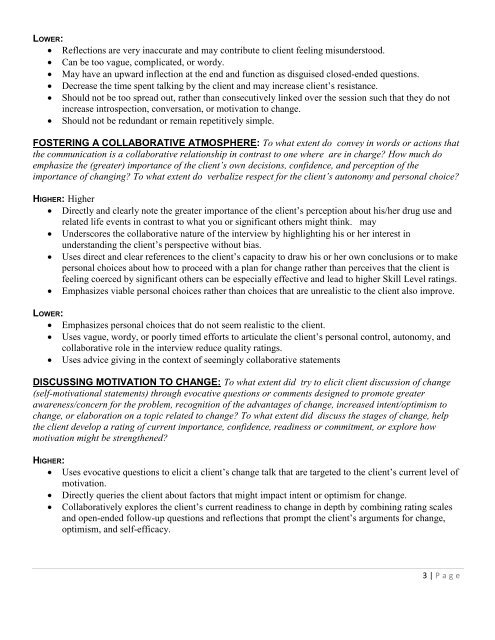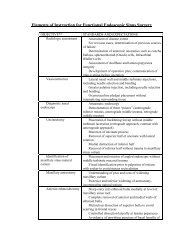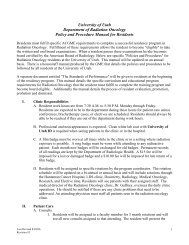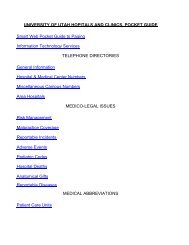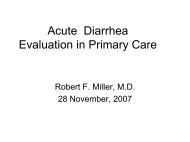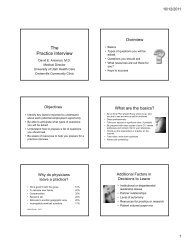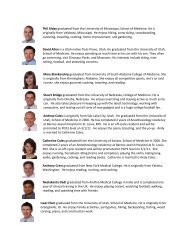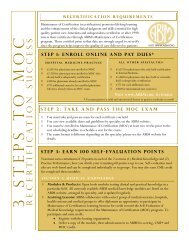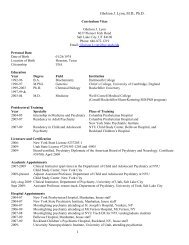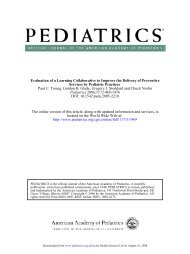Motivational Interviewing Ratings: Higher and Lower Skill Levels
Motivational Interviewing Ratings: Higher and Lower Skill Levels
Motivational Interviewing Ratings: Higher and Lower Skill Levels
Create successful ePaper yourself
Turn your PDF publications into a flip-book with our unique Google optimized e-Paper software.
LOWER:<br />
Reflections are very inaccurate <strong>and</strong> may contribute to client feeling misunderstood.<br />
Can be too vague, complicated, or wordy.<br />
May have an upward inflection at the end <strong>and</strong> function as disguised closed-ended questions.<br />
Decrease the time spent talking by the client <strong>and</strong> may increase client’s resistance.<br />
Should not be too spread out, rather than consecutively linked over the session such that they do not<br />
increase introspection, conversation, or motivation to change.<br />
Should not be redundant or remain repetitively simple.<br />
FOSTERING A COLLABORATIVE ATMOSPHERE: To what extent do convey in words or actions that<br />
the communication is a collaborative relationship in contrast to one where are in charge? How much do<br />
emphasize the (greater) importance of the client’s own decisions, confidence, <strong>and</strong> perception of the<br />
importance of changing? To what extent do verbalize respect for the client’s autonomy <strong>and</strong> personal choice?<br />
HIGHER: <strong>Higher</strong><br />
Directly <strong>and</strong> clearly note the greater importance of the client’s perception about his/her drug use <strong>and</strong><br />
related life events in contrast to what you or significant others might think. may<br />
Underscores the collaborative nature of the interview by highlighting his or her interest in<br />
underst<strong>and</strong>ing the client’s perspective without bias.<br />
Uses direct <strong>and</strong> clear references to the client’s capacity to draw his or her own conclusions or to make<br />
personal choices about how to proceed with a plan for change rather than perceives that the client is<br />
feeling coerced by significant others can be especially effective <strong>and</strong> lead to higher <strong>Skill</strong> Level ratings.<br />
Emphasizes viable personal choices rather than choices that are unrealistic to the client also improve.<br />
LOWER:<br />
Emphasizes personal choices that do not seem realistic to the client.<br />
Uses vague, wordy, or poorly timed efforts to articulate the client’s personal control, autonomy, <strong>and</strong><br />
collaborative role in the interview reduce quality ratings.<br />
Uses advice giving in the context of seemingly collaborative statements<br />
DISCUSSING MOTIVATION TO CHANGE: To what extent did try to elicit client discussion of change<br />
(self-motivational statements) through evocative questions or comments designed to promote greater<br />
awareness/concern for the problem, recognition of the advantages of change, increased intent/optimism to<br />
change, or elaboration on a topic related to change? To what extent did discuss the stages of change, help<br />
the client develop a rating of current importance, confidence, readiness or commitment, or explore how<br />
motivation might be strengthened?<br />
HIGHER:<br />
Uses evocative questions to elicit a client’s change talk that are targeted to the client’s current level of<br />
motivation.<br />
Directly queries the client about factors that might impact intent or optimism for change.<br />
Collaboratively explores the client’s current readiness to change in depth by combining rating scales<br />
<strong>and</strong> open-ended follow-up questions <strong>and</strong> reflections that prompt the client’s arguments for change,<br />
optimism, <strong>and</strong> self-efficacy.<br />
3 | P a g e


